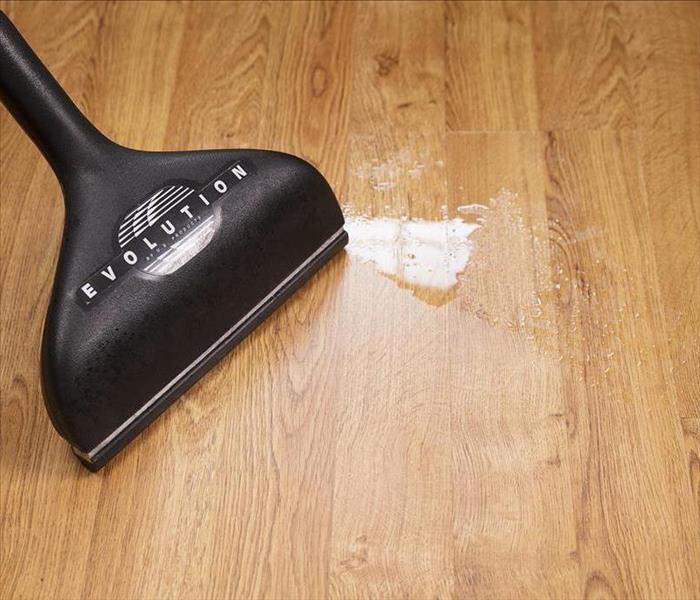Key Factors for Drying Water Damage
1/13/2020 (Permalink)
 The more water you extract or pump out of the structure, the less you will need to remove with dehumidifiers.
The more water you extract or pump out of the structure, the less you will need to remove with dehumidifiers.
Drying a house or building and its contents quickly is important to minimizing damages. Four factors affect the amount of time required for drying:
- Temperature.
- Amount of water to be evaporated.
- Humidity.
- Air movement.
Remember the rule “wet goes to dry.” The rule means that moisture moves from wet materials to drier materials or wet air to drier air to seek an equilibrium. Dry air absorbs moisture from wet surfaces. Dry surfaces absorb moisture from wet air. Each of the four factors for drying affect the process of wet going to dry.
Temperature
Drying occurs faster when rooms are heated to 70° to 90° since hot air can hold more moisture. If heat is not available, portable heaters may be used. Ideally, temperature in the affected areas of a structure should be between 70° and 80°. Temperatures above 85° on the first drying days could result in too much moisture in the air causing secondary damage if there are not enough dehumidifiers.
Amount of Water to Be Evaporated
The more water you extract or pump out of the structure, the less you will need to remove with dehumidifiers. A liquid is easier and faster to remove than a gas. Physical extraction is 1200 times more efficient than dehumidification. We use a submersible pump if two inches or more of water is standing in the affected area.
Truck mounts can extract 36,000 gal/day. The best dehumidifiers can extract only 30 gal/day. Therefore, physical extraction is important.
Air Movement
Air movement is important to drying. The air in a water-damaged room is normally damp and humid, slowing evaporation. Blowing the damp air out and bringing warm, dry air in will speed drying. Proper positioning of air movers will help. Remember to change the location of air movers as drying occurs to promote even, thorough drying of surfaces.
Learn more about our water restoration process and call SERVPRO Fernandina Beach/Jacksonville Northeast at 904.729.2401 if you have water damage.






 24/7 Emergency Service
24/7 Emergency Service